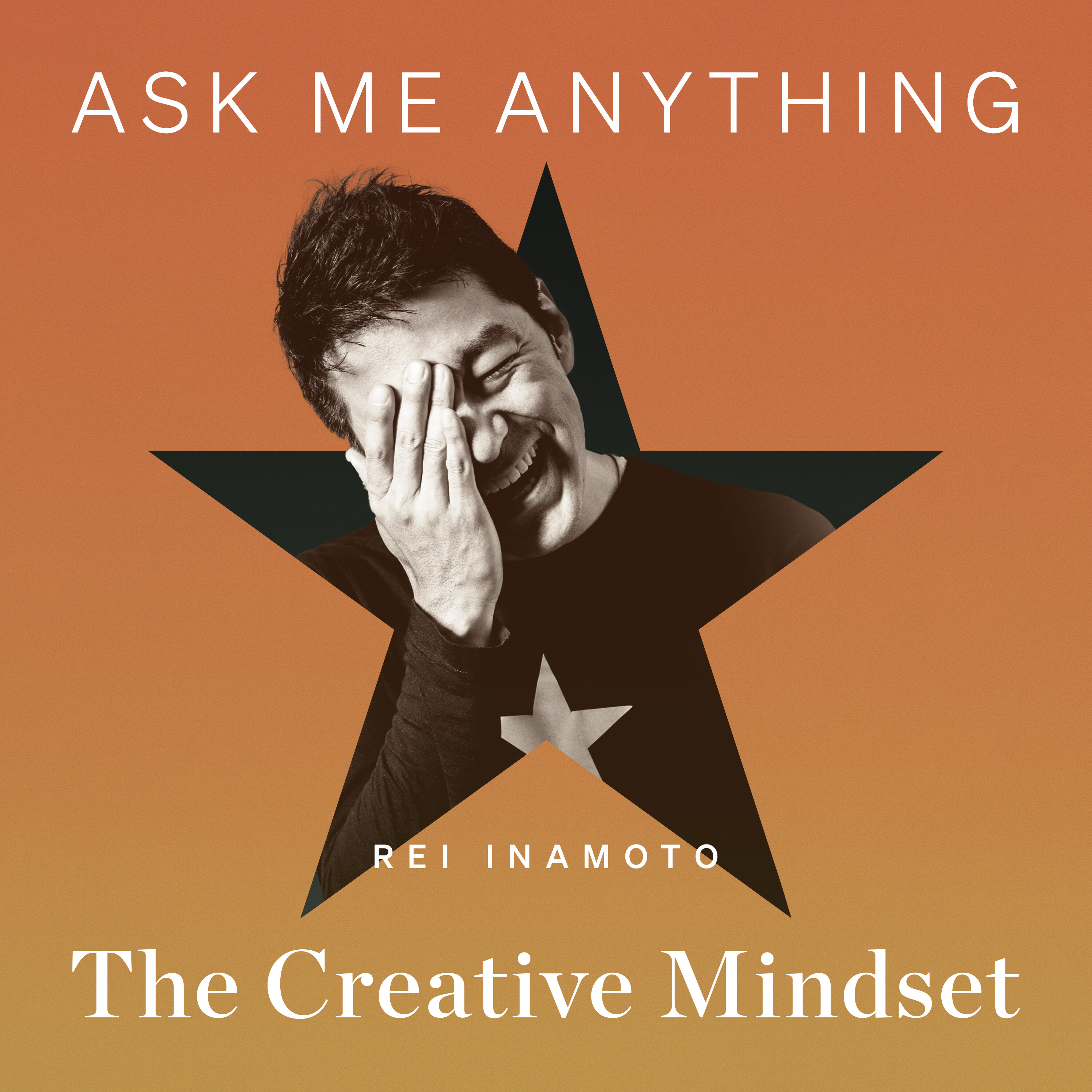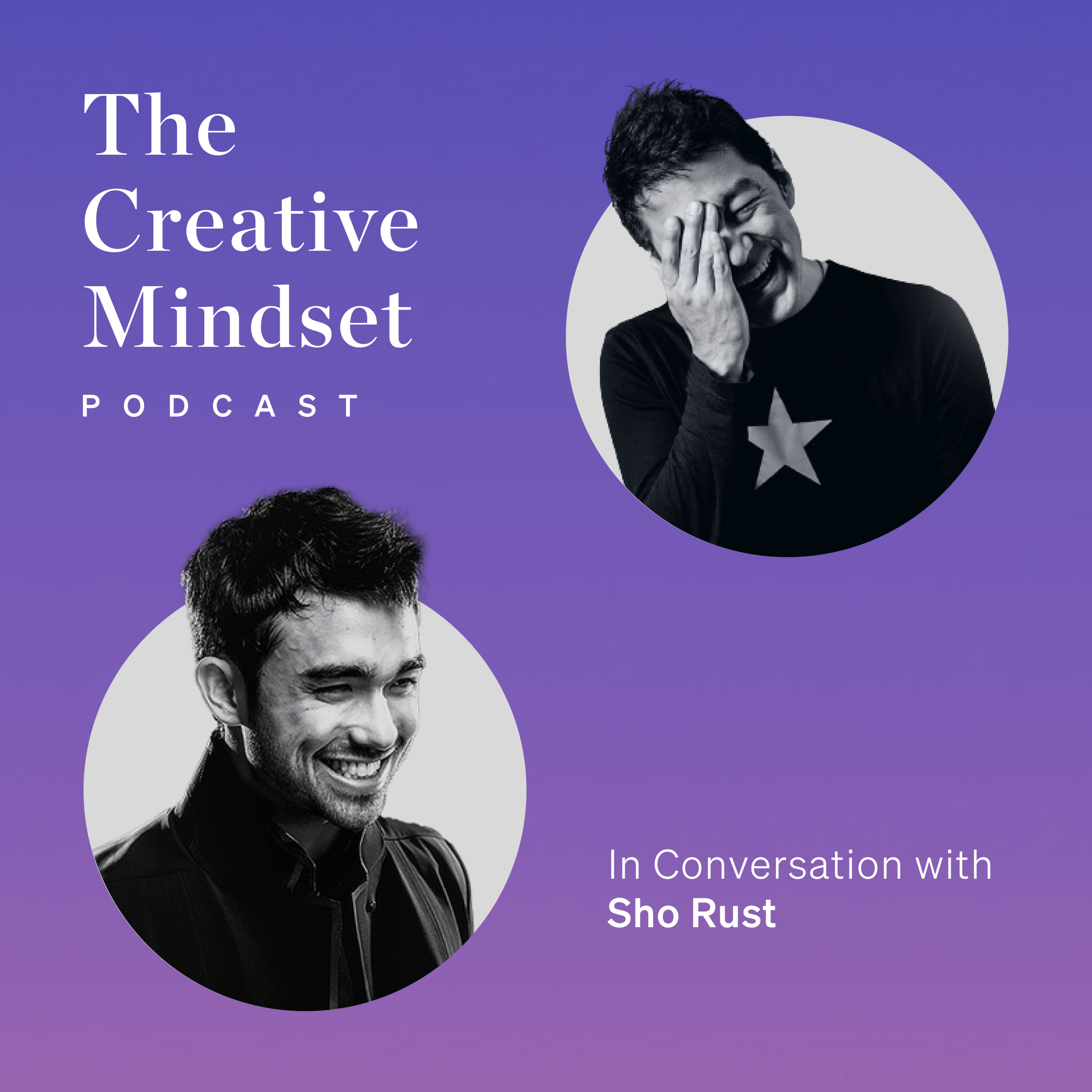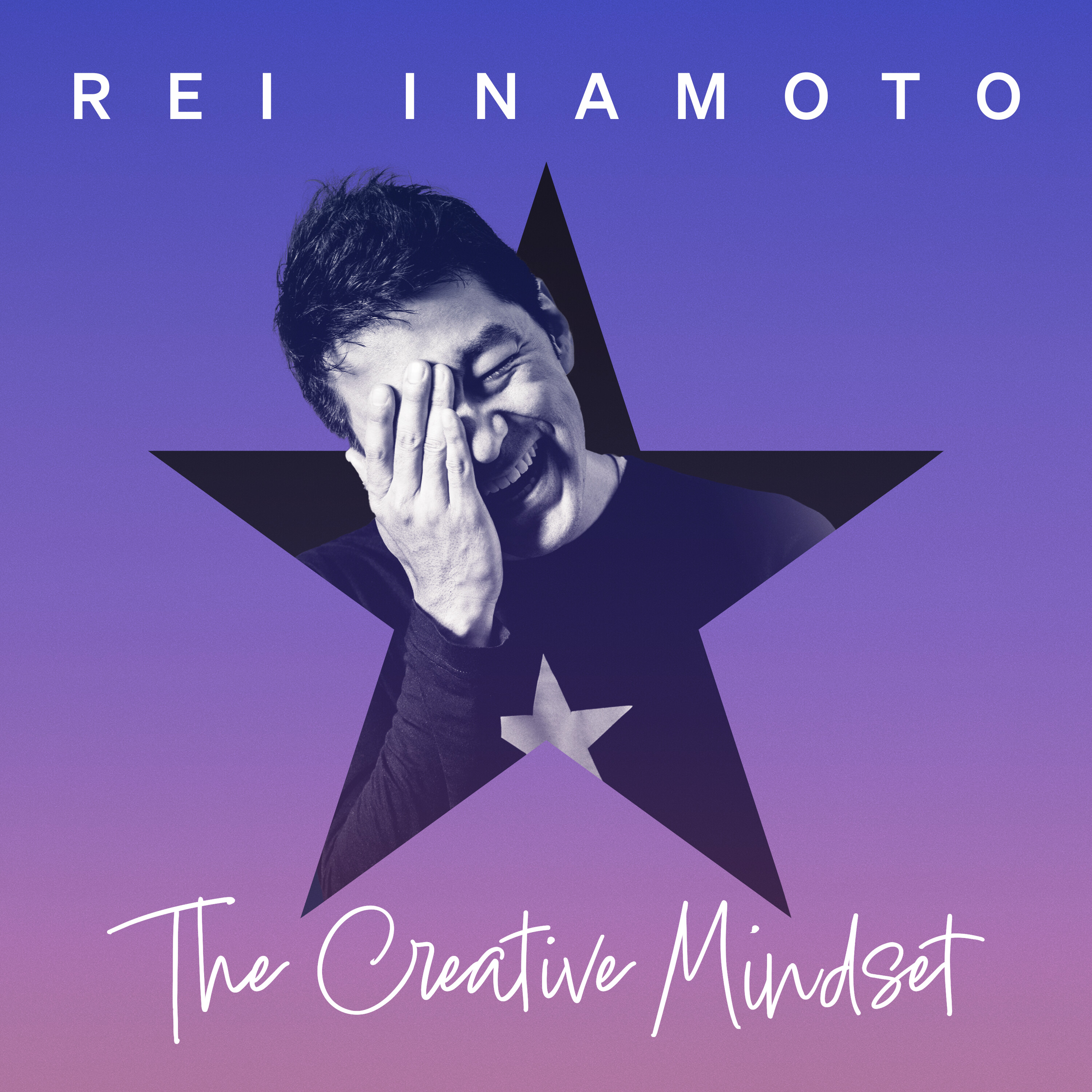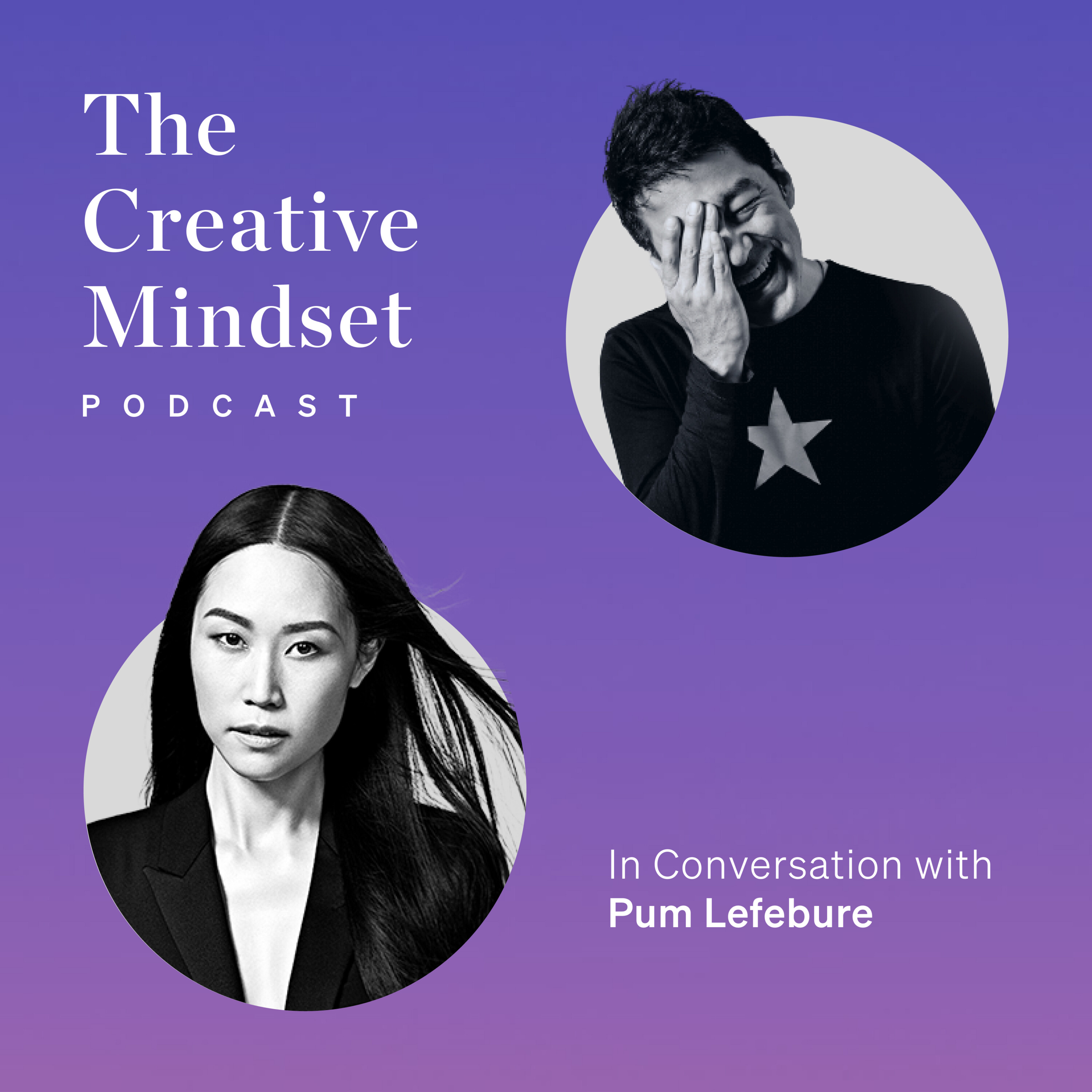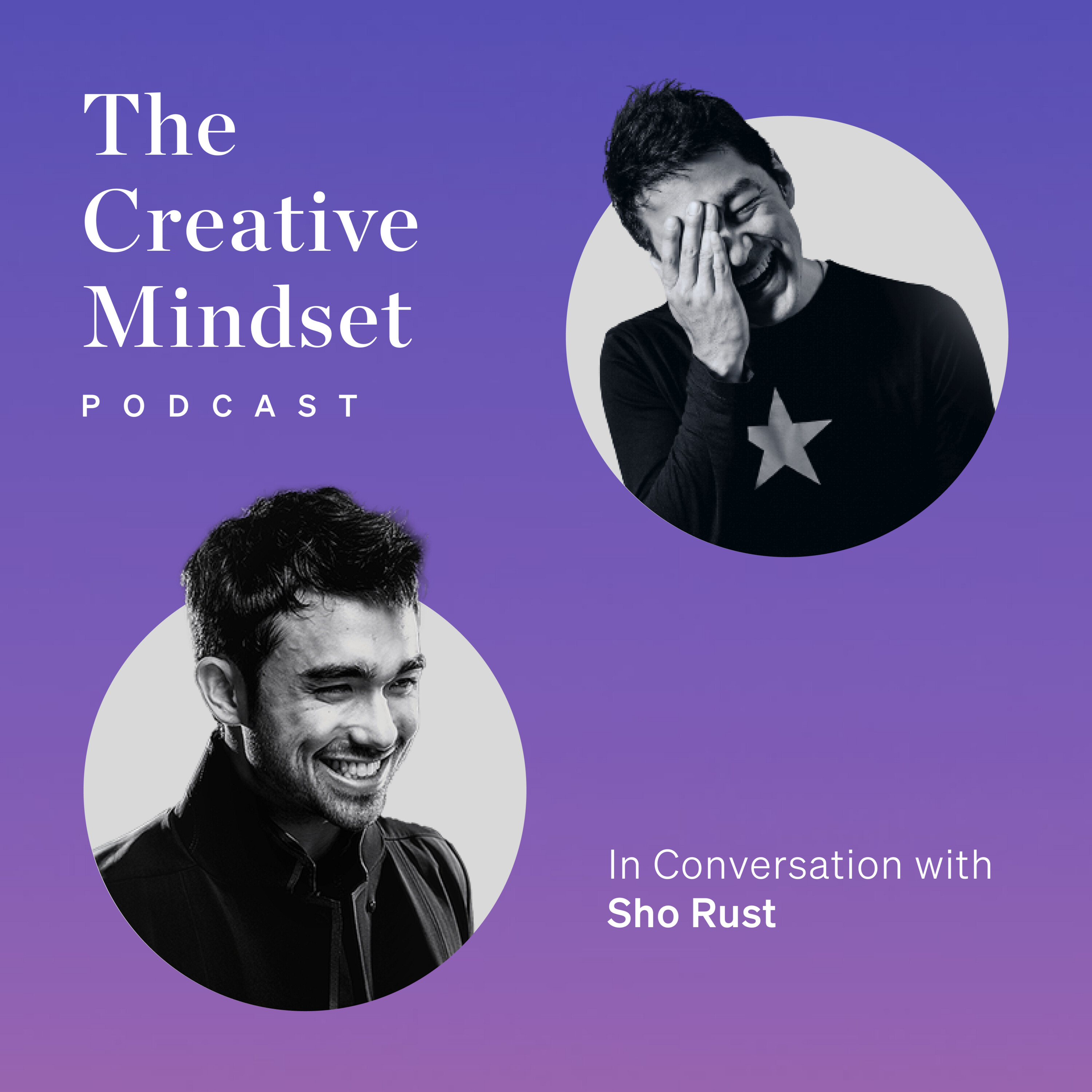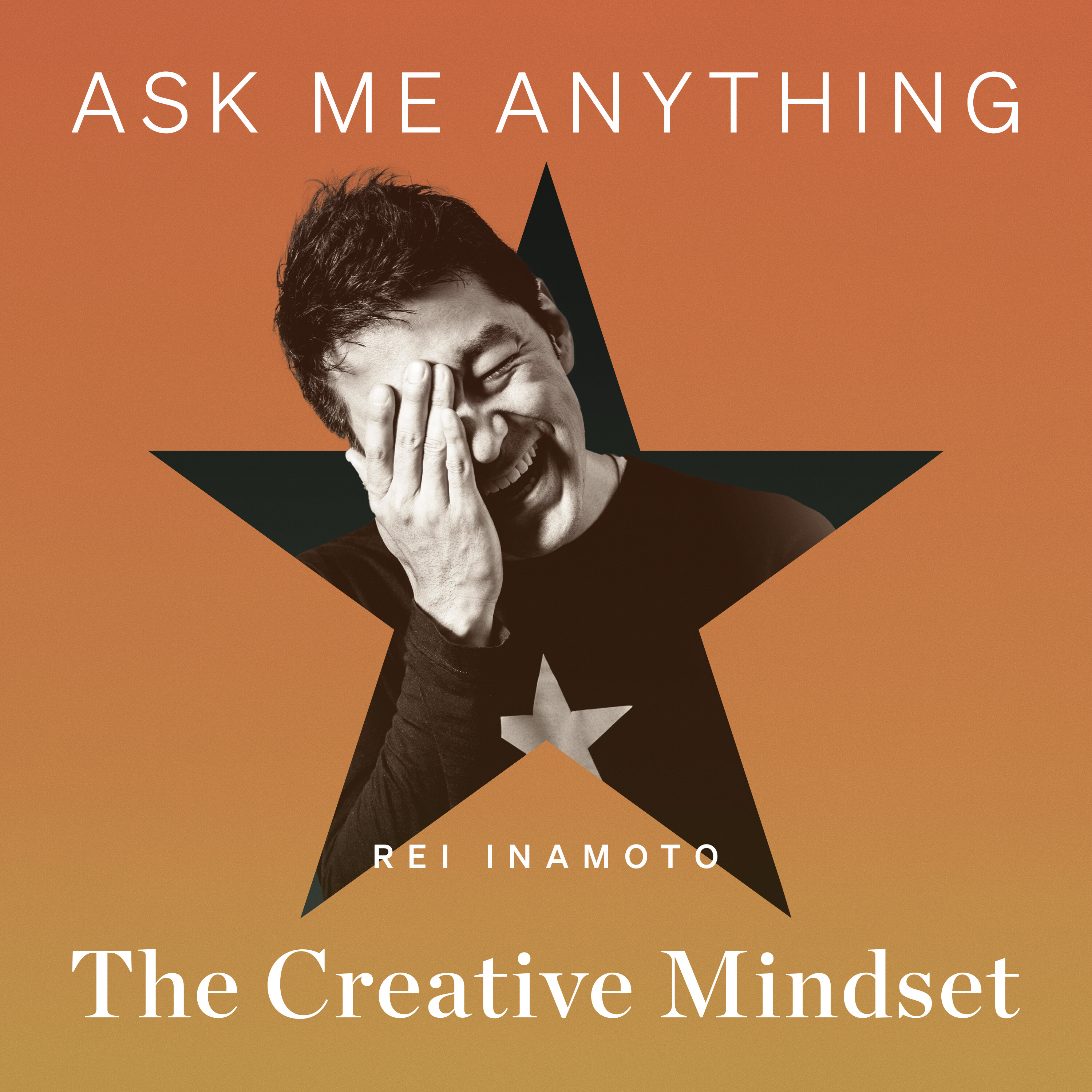This week, the question comes from Kaz,
an entrepreneur who started a design company called Gypsy in San Francisco.
They work almost exclusively with startups and become a hired design team in exchange of equity,
a business model that my company also has dabbled with.
Kaz wanted to discuss with me what the future holds for design agencies in the age of AI.
Definitely a hot topic these days.
So let's get started.
Kaz, where do we find you?
Can you tell us where you are now?
I'm currently in Tokyo, but I'm primarily based in San Francisco.
Yeah, you mentioned that you're there for a few weeks for a company conference.
Is that right?
Exactly.
So there was a huge startup conference called IVS,
and I had a pleasure to get invited and give a talk about this transformation around AI,
which we'll be talking soon.
So yeah, excited to be here as well.
Yeah.
So I would love to jump in.
First of all, thanks for reaching out to us in the first place.
And yeah, tell us what you would like to talk about today.
Sure, sure.
And thanks for having me, first of all.
You've been a great inspiration as well.
So to do a quick intro, I guess, my name is Kaz.
I'm a co-founder and CEO of ZipSee.
We're essentially a design and investment firm for startups.
And we do two things.
First thing we do is for early stage startups, where potential is more of a non-capital,
we invest our brand and product building expertise in exchange for equity
to help startups get through the first phase.
This typically means taking startups to that they're built something impressive enough
to raise money on a larger scale.
And second thing is for growth stage startups,
we integrate as a design team to further support product building and content creation.
And today, I'd definitely like to talk about, simply put,
what does the future design agency look like?
Given that emerging technology like generative AI, and for context,
even copywriters, even everyone can write a copy, even graphic designers.
Anyone who doesn't have design expertise can now generate older graphics through generative AI.
And from a macro perspective, our value has been demand and supply.
People pay you for design services because you know how to use design tools,
you know design principles, and your expertise is scarce.
But then with the adaption of this AI, it feels like more and more people can design things
that anybody could not design before.
So first and foremost, as a design founder, I'd love to really discuss and get your insights
on what does design agency in two years look like?
And what do we need to really prepare and adapt for this change?
I will start off by saying that nobody knows what the future is going to be.
And the best that we can do, and there are a couple of things that we can do.
One is we can guess what it could be.
Two is to prepare what it could be.
And three is to create what it should be.
To talk about the specific question about the future of design agencies,
which is essentially a company that you run,
and a company that we provide design services to clients as well.
And there are similarities and differences between what you do and what I do.
But just in terms of providing design services to clients,
if the past is any indication of what the future could be,
I think there is an aspect or there are aspects of AI that are rightfully underestimated.
Two years ago, nobody was talking about generative AI.
Two years ago, nobody.
Even a year ago, you know, a year, June, July of 2022.
Yeah, you know, tools like Mid-Journey and other tools were out there,
but not to the extent of accuracy,
and not to the extent of capability that we see in the summer of 2023.
So a year from now, if you see the exponential growth of AI,
and particularly generative AI, creative generative AI,
such as ChartGPT and Mid-Journey and DALI and other tools,
the change that we saw in the past year versus the change that I think we'll see,
I think will be just like a hockey stick curve.
So, you know, right now it's kind of like this,
and it started to go up, and it will even be steeper.
I think that the rate at which the changes will happen.
Now, having said that, and I'm sure you know,
you've played with a few different AI tools,
particularly because we were talking about the future of design agencies,
like visual generative AI tools.
There are certain things that those tools are very good at.
They are very good at visualizing and generating images out of nothing
that look quite real, right?
Things that are based on the real world that we see,
and then maybe mix it with other things to create somewhat surrealistic images, right?
And those tools now allow us to create images at such a quick pace
that we didn't see, a quick pace that wasn't possible before.
At the same time, I, again, like people who have seen AI,
generative AI tools, and particularly image generative tools,
should recognize the fact that it's good when you don't know quite what you want it to do.
And you give a generic prompt, and it will give you very specific images.
But if you have a very clear idea of what you want to create,
and you need to generate those images, it can be quite tricky.
Because it's like telling a primitive living thing what you want,
and it interprets in its own way.
So I think there's still some time for these generative,
and I might be wrong, because the change is happening exponentially.
But I think as it relates to generic image generation using AI tools,
I think it's extremely useful, and it will cut down the cost,
the time, resources, and cost of generating images, right?
But when it comes to design, and I'm actually using the word
image generation versus design creation, are two slightly different things.
Slightly, but very different things.
And when you're getting requests from clients,
and you as a creative director, you as a design director, you as a designer,
you interpret those requests, and questions, and ambiguity.
And as a human being, we interpret and generate a very specific thing.
Even something as subjective as, say, a logo,
like if you have a specific idea, and if you wanted AI tools
to create exactly what you have in your head,
it's very, very challenging.
So I think that will AI replace human beings and human designers?
I think if you are a very mediocre, average designer,
I absolutely think that AI can replace human designers.
But if you are a very high caliber, high level, and strategic creative thinker,
there's still a lot of room for human beings to use AI,
and human plus AI creating something new that human alone or AI alone can't create.
As it relates to design specifically, which is,
design is a discipline of solving problems.
It's not just creating for the sake of creating, that's art.
Creating for the sake of art, creating for the sake of creating is art.
Creating for the sake of solving a problem,
or in service of other things or others, that's design.
And AI, at least in 2023, and for the foreseeable 12 months,
I would say, it falls short.
So to get back to your original question about what does the future look like
for designers and design agencies,
and I think this will be probably true for the next,
say, five years or even 10 years,
is that if you focus on not racing to the bottom of the tasks
that you need to do as a designer and as a design agency,
but you race to the top,
how can you go to the top of the problem solving ladder, so to speak,
and really operate at that highest strategic level?
That's where the humans can still have an edge
and leverage AI to solve those problems.
But if you are providing services that are just like scaling
and generating scale or generating quantity,
then I think it will be just the race to the bottom.
And even today, if you use AI to provide a service
that allows you to generate 1,000 images in one minute,
three months from now,
another company will do the same thing, but 10 times.
That company will create 10,000 images in one minute,
and then a year from now, it will be a million images
in one minute kind of thing.
So if you are in the business of creating quantity,
then I think your days as a design agency will be numbered.
Yeah, I really resonate on what you just said of quality over quantity
and how you communicate with the interaction of a computer.
And also, as a design studio founder in San Francisco,
we also work with a lot of startups in the space.
And what we see in the landscape is the whole definition of design is changing.
What I mean by that is, I think from back in 1980,
we, this design studio, a design firm called IDEO,
invented this graphical user interface and a mouse
where everyone can point and click things to open the files.
And before that, in order for you to communicate with a computer,
you have to know this command line language to just even open the files.
But right now, we call this a natural language interface.
The whole design principle is interacting with a computer just like you talk to a human.
So we're starting to see the startup where you order through your voice,
and then the computer will execute and read through the contents.
And in a more simple perception,
if you have a friend who started all the information in the internet,
we call this LLM.
And if you have a very smart friend who asks a question,
who answers it for you, the chat GPT.
And if there is a friend who proposed what to do,
they will execute the task for you.
That's like agent GPT or order GPT.
And the whole job of design, our job was to design the interface,
design and experience using Figma, or like helping helping stars communicate.
But right now, we recently saw a Figma AI release
where people write a prompt and they design interface.
So yeah, very like both how to say curiosity
and a little bit of fear of this ambiguity on what happens.
Um, yeah, definitely.
Yeah, I personally really, really spending a lot of time thinking about
why people choose us over like any other current solution over others.
So that's kind of like a general context of why I really wanted to be here.
And yeah.
Yeah, I think that the question that you just asked,
why us versus others?
Why does the client, why does this person choose me or choose my company
to provide what they might need versus others?
And others could be other companies, but could also be other individuals
who might be, you know, could be another company that has 10 people,
50 people, 100 people, or could be one person who's using AI
to produce as much as a 10 person company or 50 person company doing.
So I think the threat is, yes, the way you can look at AI as a threat,
but the bigger threat, I think it's people using AI to replacing what you do.
You know, so I'm not worried about AI, particularly self as a tool
to replace me as an individual or say my designer even,
but other companies using AI to produce things much more quickly.
And I think that the key would be, because when we talk about AI,
and particularly AI as it relates to the creative and design industry,
the first thing that everybody talks about,
and this is the dominant thing right now is efficiency.
Oh, AI is going to make this efficient, right?
And nobody is talking about AI is going to make my work better.
How can I use AI to make my work better?
That's, I think that's a better question to ask,
because the thing is, everybody knows that we can use AI to do things more quickly
and to be more efficient and to be more productive.
And that's what everybody's going to be doing in no time, right?
But the real question, and I think the real focus as a designer like ourselves,
that we should do as a creative like ourselves,
what we should do is how can we use AI to make my work better?
Not just make it efficiently, but how can we make the work better?
That I think is a question.
And right now, the majority of companies, including these startups in Silicon Valley,
and especially, I mean, you know,
Silicon Valley likes to think and likes to believe that technology will solve everything.
And yes, to some extent, but also you create a lot of problems.
I mean, you know, look where we are with social media.
People thought that social media would connect everybody in the world,
which it did, but it also divided the world.
Yeah.
And AI, I think, is a different phase and different type of different dimension
to technology that we didn't see before.
Yeah.
And the other thing that I would add to the conversation, a couple of things.
One is, you talked about IDEO and the graphical user interface.
By the way, just to talk about history a little bit,
graphical user interface was invented at a company called Xerox PARC.
And it was in Silicon Valley back in, I think, in the 70s or even earlier.
And then Steve Jobs saw what they were doing and said,
OK, that's the future.
And I'm going to create a company using that kind of interface.
And I'm not sure if Steve Jobs hired IDEO to create the mouse,
but I think there was a researcher at Xerox PARC who was using a device,
a mouse-like device to control what was on screen.
And then later, you know, that became the more advanced graphical user interface
controlled by and managed by a device like a mouse.
That was one just historical thing.
But the other thing that I, it's also a history thing, but
do you know a story about the push button on elevators?
Do you know about this?
So, you know, like when you go to an elevator these days, right?
And I mean, every elevator pretty much has a push button.
And you don't think twice about it.
You just press, OK, I'm going to, you know, floor 7 or floor 27 or whatever.
And it just goes.
But when elevators were invented, I mean, elevators as a concept has been around for,
that concept of elevators has been around for many, many centuries.
But the actual, the elevators, as we know,
elevators that are operated with electricity and power
were invented in 1850s, I think 1854 or something.
Yeah.
But at that time, they were operated with an operator in the elevator to
let you ride from one floor to, yeah.
So there was, it was human operated, right?
And in the late 19, 1890s, I think 93, I want to say,
the first elevator with an elevator button was introduced in a building in New York.
Do you know how long it took for that to become a common thing
in New York and the rest of the country?
So something that we, something as mundane as an elevator button, right?
It was invented in 1890s.
Technologically, it was possible for anybody to push a button
to go to the floor that you wanted.
It actually took until 1950 for that to become a common thing.
So it took over 50 years.
Yeah.
Yeah.
In 1945, there was a big strike.
Similar to, you know, I mean, you live in San Francisco,
you must have heard about the writer's strike
that was happening in LA and in New York recently.
So writers, you know, Hollywood and TV writers were on a strike recently
against the studios using AI as a way to make the work more efficient.
Right?
And there were other factors as well,
but that was one of the main things that they were on strike about.
Back in 1945, a similar thing happened with elevator operators and the elevator button.
So 1945, like in November or something,
15,000 operators in New York City decided to go on a strike.
And because the majority of the elevators at that time
were still being operated by people, New York City basically had to shut down.
It was like, you know, imagine like traffic signals going off.
It would just destroy, it would just make the traffic system in New York irrelevant.
Right?
It was kind of like that.
Like, you can go into a building and go to floor 18 or whatever.
Right?
So the city shut down and then the city mayor had to negotiate with the elevator operator union
to say, you know, like, we will do these things to make it work for you.
And, but what that did, what that strike did wasn't so much a legal improvement.
What it introduced or what it forced was technological improvements to the elevators.
Technological improvements such as, you know, like when you're on an elevator,
there's an emergency button.
Right?
So like something happens, you can push it or you can pull it and then the elevator would stop.
That was one of the new features.
Another feature was a phone.
Like if there's an emergency, you can call the phone to ask for help.
Yeah.
And those technological and visible, visible features were introduced to the elevators.
And those visible features gave regular people the comfort and the psychological security
to say, now I can ride this elevator.
And even if something happens, I know I can get help.
So for 50 years, people didn't want to ride an elevator without a human operator because
they thought, even though it was technically safe already at that point, they didn't feel
that they were in control of the elevator.
They were, they felt that they were unsafe.
So for 50 years, people didn't adapt.
And it took the strike to introduce additional visible features that would give the user
the psychological safety to start getting used to elevators with a push button.
So that was a long-winded way of saying that technology, and this, by the way,
to give credit to where the credit is due, I heard about this little anecdote from a
New York Times podcast.
And he just mentioned, you know, it was a reporter who mentioned about this, and he
just mentioned a couple seconds in that episode.
So I looked into it.
That's why I knew all the dates and the specifics of it.
But the point that he was making was that it could take a while for technology to be adopted.
You know, we think that, oh, it might change things overnight.
Yeah.
I mean, something as mundane as an elevator push button, you know, and we don't think
twice about it now.
But back in 1893, when it was invented, it was this automatic AI button, you know, this
artificial intelligence button that you just press it and it takes you to the floor that
I want to go.
Magic, right?
It's just like, oh, prompt.
Boom, it creates these images.
Yeah.
So I do think that right now, the state of generative AI, particularly generative AI
as it relates to design, is in its nascent stage.
But you can definitely use it.
I mean, I use it to like brainstorm things.
You know, when I'm stuck with writing, I just kind of ask random questions into ChatGPT.
And I don't find myself copying and pasting exactly what ChatGPT says, but I use it as
a basis to, oh, OK, you know, these are ways to say this or these are ways to look at this.
And also because ChatGPT can be pretty inaccurate that we shouldn't trust what it says.
And yeah, I really love the insights and even like elevator history.
It's like, I feel also definitely see the similar foundational principles as we see
as a graphical user interface as well.
Yeah.
Yeah.
Are you using AI in any of your workflow?
Yeah, actually, in many places.
We do actually like we recently designed products that automatically
dub your voice, which means if you're speaking Japanese using your own voice,
you let your talking video to talk in different languages or variety.
We recently worked with a startup called Building Marketing Automation Tools where
they're trying to automate the content marketing workflow where, you know,
in a content marketing workflow, I can research your research.
Hey, what kind of content should we write?
What kind of keywords we should talk about?
OK, let's talk about AI design principles for AI products.
And then the writer comes in, the writer writes a blog.
And then after the writer writes a blog, the social media manager writes in Twitter thread,
LinkedIn post or Instagram post.
So right now we are designing this like automation tool where research agents,
let's design research agents and let's connect that research agents to blog writer agents.
Blog writer agents writes based on the research agents output.
Twitter, Twitter writer agents like a blog writer agents will write based on
what the blog writer agents wrote.
So by just dragging and dropping all these like agents on the interface,
you're pretty much designing the entire workflow that we used to do as a content marketer
to produce the similar outputs.
So I think that's the immersion of older GPT or agent GPT.
And also truly seeing like, you know, including some of the, you know,
graphical image generation, as well as it's like workflow automation tools.
Those are like something we see during the real-time projects.
Yeah, I mean, that's one job.
Social media manager is one job that I think is going to be replaced
or is being replaced by AI as we speak.
Truly, truly.
Yeah.
I really love the part where you said, instead of like, you know, replace or like reduce the cost,
like how can we improve our work using AI?
And probably you'll definitely be interested in knowing like how do you think you would,
it's kind of a very open-ended discussion and brainstorming,
but how do you think you would apply like all these like mindset to your own work
or either through personal life or professional?
The way that I'm personally using it right now and the way that my company is starting to use AI,
there are a couple of different dimensions to it.
One really useful way of using AI today is in the very early stages,
when you need to generate ideas, a lot of ideas,
because I think the quality of the idea that you end up pursuing oftentimes depends on
the quantity of initial ideas that you generate.
And sometimes I've noticed with AI as well, sometimes, you know,
your first idea might be the best idea, but you need to go through the process of
generating a lot of other ideas to convince yourself that was the good idea.
You might never know, you know, it would take a while for you to realize it's a right idea,
but this is a good idea, or is it an idea that I should pursue?
Recently, I was working with a client, and we were needing to, it was a branding assignment,
and we needed to come up with a name, product name.
And it was a couple of people brainstorming, and then we were using AI as well to do it.
And AI was in like literally seconds, was able to produce 50, 100 ideas.
And then just in a matter of 10 minutes, we had hundreds and hundreds of ideas,
you know, for that product name.
But where we landed was what a human came up with initially.
And all these iterations that AI came up with weren't, they just didn't resonate.
But before, you needed to go through the process of generating those yourself or,
you know, with other people.
So I think, I would say it's less about efficiency or even productivity,
but it's more about exploration.
I think, again, to my point earlier, people are talking too much about the
efficiency gain or productivity gain.
But really, the gain that as designers, as creatives, that we gain,
yeah, sure, you know, we want to be able to produce things more quickly and more efficiently.
But I think the real edge is exploration gain,
that we get to explore way more than we used to in the past.
You know, two years ago, if you needed to generate, create a logo,
it took you eight hours to create, let's say, 100 logo options.
Now, you can do that in a couple of minutes.
Many of them are shit, to be honest, you know, they're not very good.
Yeah, I mean, speaking of which, I was using a couple of AI tools to generate logos,
and none of it was barely useful, usable, usable, none of it, none of it.
Yeah, I mean, it's interesting.
And, you know, it's taking those cues from other logos and images on the internet.
But none of it was usable.
Now, the reality of the business world is that the majority of people and companies
will be okay with what's good enough.
What AI generates is just good enough right now.
But the sad reality is that a lot of people will be okay with it.
And that's what I was talking about earlier about,
you know, we need to keep streaming upward, not downward.
You know, we shouldn't be racing to the bottom, we should be racing to the top.
And again, the reality is...
And, you know, I think like, if you look at other industries,
like photography industries, or illustration industry,
those industries went through similar identity crisis as well.
You know, when photographic camera was invented in the 19th century,
you know, photographers were like, oh my god, you know, this is going to replace my job.
Yeah, and even more recently, let's say within the past 10,
15 years, when smartphone cameras became good enough to take pretty damn good photos,
you know, it didn't...
To be fair though, it didn't replace photographers,
but I think it definitely put a lot of pressure on photographers.
Yeah, I do remember talking to a photographer friend of mine.
This was probably about seven or eight years ago.
He said...
And he's in his 50s, he's been practicing photography since he was, you know,
early in his 20s and since 1980s and 1990s.
And back then, the ask that he was getting versus now the ask that he's getting from
similar clients is the clients want you to produce 10 times more
than what you used to produce 10 years ago, 20 years ago.
And then I think...
And then that would decrease the cost per unit, you know, cost per photo.
Before, the clients may have been paying, say, $10,000 for a really,
really beautiful product shot or a really, really, you know,
beautiful shot of a model, whatever it might be.
Now, that has probably decreased just because the speed at which
these imagery content gets digested by society is so much quicker.
Yeah, but again, to the point that I was making was that
you shouldn't just chase efficiency.
You should use AI to really pursue...
You should use AI not to just chase efficiency, but really pursue exploration.
How can you push exploration?
And that's where I think where your work becomes better.
I mean, to use a different analogy, yeah, Michael Jordan said that, you know,
the reason why he succeeded was because he failed more than anybody.
Yeah, you know, he lost that last shot.
He lost this, you know, this pass.
He lost this.
He lost that.
Or he failed at this.
He failed at that.
But that's why he succeeded.
And with humans and AI, the people, the humans that will bubble to the top
are the ones who will spend more time with AI and who will explore more and generate more.
By the way, thank you for all the insights.
I'm really, really...
I can go back and, you know, really make decisions with confidence.
Like one of the biggest learning is leverage AI for excellence, not efficiency.
And, you know, so, yeah, I think during going through this ambiguity,
especially both from the side where we design a product related to AI,
but also the one who use AI to deliver some value to other people.
I think the directions, like all the creative mindset for making decisions
is it gives me a lot of confidence.
So, yeah.
I would say as a fellow Japanese designer, Japanese creative working in the US,
you know, I don't get to come across people like you a lot.
Having been in this industry for, you know, more than two decades,
I'm a few years older than you.
And it's been an interesting journey in that it's really, really rare
to meet a Japanese person working abroad.
So I'm super appreciative of the fact that you reached out to us
and, you know, decided to have this conversation.
I'm encouraged by the fact that there are people like you
in the same or similar industry doing similar things, different but similar things.
And on top of that, you know, I come from a background of design and technology
and, you know, that's what you're doing now as well.
So as a fellow Japanese creative individual
leveraging technology to make the work better,
I'm excited, you know, to see what you will do
with the company that you're building and with the tools that you're building.
And also I hope that we get to work together at some point in some capacity.
That would be my dream.
Thank you.
As a creative entrepreneur, you've been a huge inspiration.
So yeah, thank you so much.
You don't know how much I'm overwhelmed and honored to be here.
Yeah.
Thank you so much.
Thanks so much.
That was AMA, Ask Me Anything,
where I answer questions from Kaz Tamai,
a Japanese creative entrepreneur based in San Francisco.
His question, the topic that he brought to the table
was the future of design agencies in the age of AI
is very close to my heart and close to what I do
because I can benefit from AI.
At the same time, I, as an individual, as an entrepreneur
and as an owner of a creative company, we can be threatened by AI.
In another conversation that I was having with a friend of mine recently,
he asked me whether I am an AI optimist or an AI pessimist.
And my answer to him was that 60% optimist and 40% pessimist.
I'm pessimistic about AI because I don't necessarily think
that AI will replace my job immediately,
but it will definitely speed up the pace at which I,
as a professional individual, can be relevant.
The point of being relevant, I think, is a never-ending pursuit
that we as human beings and we as professionals,
not just designers, but professionals and human beings
have to keep asking ourselves,
what makes me relevant? Why am I relevant today?
And then the flip side of that same question is,
what can make me relevant tomorrow? And what can replace me?
That, I think, is a never-ending pursuit
that we as humans and professionals have to keep answering.
This was a good reminder that even though I was in a position
to answer a question from one of the listeners
and a fellow entrepreneur in a similar sector that we are,
it gave me a reason to pause. It gave me a reason to think
and gave me partially some threat as well as encouragement
to make sure that I can be relevant today, tomorrow, and the day after.
Another aspect of this conversation that I had with Katz today
that gave me a lot of encouragement and made me smile
was the fact that a younger person like him
is going outside of his home turf, going outside of his comfort zone
and trying to do things at a global level.
That has been my motivation for a long, long time,
for the past 20, 25 years or so.
And it's good to see somebody who's 15, if not 20 years younger than me
to be pursuing a similar mindset, but they're very different contexts.
And I hope that his voice can become a voice of encouragement
to a lot of listeners as well.
On this podcast, we take questions from the listeners.
Like today, if you have a question, if you have a topic
that you would like to talk about, definitely, definitely do reach out to me.
You can find my social media links in the show notes.
So please get in touch.
I am your host, Rei Inomoto, and this is The Creative Mindset.
See you next time.
